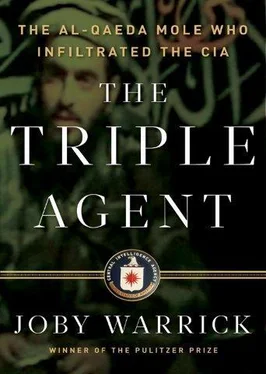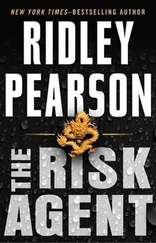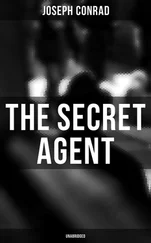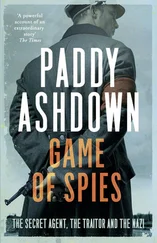9. The Taliban’s defeat had been engineered by a small group of CIA officers: For perhaps the most authoritative description of the CIA-led offensive, see Gary Berntsen, Jawbreaker: The Attack on bin Laden and al-Qaeda (New York: Crown Publishers, 2005).
10. “will have flies walking across their eyeballs”: Jane Mayer, The Dark Side: The Inside Story of How the War on Terror Turned into a War (New York: Anchor Books, 2009).
11. shut down for good: Mark Mazzetti, “C.I.A. Closes Unit Focused on Capture of bin Laden,” New York Times , July 4, 2006, http://www.nytimes.com/2006/07/04/washington/04intel.html?_r=1.
12. She arrived in Kabul in August: Details of Hanson’s time in Afghanistan provided in author interviews with two agency colleagues and two family members.
Chapter 9: Chief
1. attempted to bury an IED: An account of the premature mine explosion is contained in International Security Assistance Force incident logs for Afghanistan’s eastern district for Sept. 19, 2009, and released publicly by the anti-secrecy Web site WikiLeaks in July 2010.
2. She would be safe at Khost: A detailed description of Matthews’s experiences and conversations during her early weeks at Khost was provided in author interviews with eight former agency colleagues as well as two relatives who were in frequent communication with her during the relevant periods.
3. “the only women in a sea of men”: A narrative of Matthews’s early years in the CIA was drawn from accounts provided in interviews with six agency colleagues who knew her professionally and socially during that period, with additional insights provided in interviews with family members.
4. The officers … drew up contingency plans for killing bin Laden: For an authoritative account of pre–September 11 failures in the pursuit of al-Qaeda, see the final report of the so-called 9/11 Commission, The National Commission on Terrorist Attacks upon the United States , http://govinfo.library.unt.edu/911/report/index.htm. Report released in July 2004.
5. “We’re at war now, a different kind of war”: Former CIA counterterrorism director Cofer Black’s words as remembered by a former CIA officer, in John Kiriakou and Michael Ruby, The Reluctant Spy (New York: Random House, 2010).
6. the case became the center of a roiling controversy: See Mayer, The Dark Side: The Inside Story of How the War on Terror Turned into a War , loc. cit.
7. Zubaida was never truly an al-Qaeda leader: For an assessment of Zubaida’s role in al-Qaeda, see Peter Finn and Joby Warrick, “Detainee’s Harsh Treatment Foiled No Plots; Waterboarding, Rough Interrogation of Abu Zubaida Produced False Leads, Officials Say,” Washington Post , March 29, 2009.
8. Teams of SAD officers and Special Forces commandos spearheaded the assault: See Berntsen, Jawbreaker: The Attack on bin Laden and al-Qaeda , loc. cit.
9. They arrived in Khost at 2:00 A.M.: An account of the CIA’s first days at Khost was provided in author interviews with one current and one former agency officers who were present at Khost during the events.
10. Green Beret sergeant named Nathan Chapman: For more on Chapman, see the Special Forces tribute site to him: http://www.quietpros.com/Afgan/chapman_nathan_ross_5sfg.htm.
11. Haqqani had spent years on the CIA’s payroll: For a comprehensive history of the network and its founder, see Jeffrey Dressler, “The Haqqani Network,” Afghan Report No. 6, Institute for the Study of War, October 2010, http://www.understandingwar.org/report/haqqani-network.
12. “It’s just rudimentary, baseline, box-checking training”: Author interview with retired CIA instructor who led training courses and exercises for CIA officers at Camp Peary, near Williamsburg, Virginia.
13. There were three thousand of these soldiers in the eastern half of Afghanistan: For an account of the CIA-trained Counterterrorism Pursuit Teams, see Bob Woodward, Obama’s Wars (New York: Simon & Schuster, 2010).
Chapter 10: The Double Agent
1. first big score as a spy: Details of Balawi’s video attachment and the reaction within the CIA were described in interviews with three current intelligence officials who participated in meetings to discuss the finding, and one former U.S. intelligence official who reviewed internal memos and notes about the events.
2. a top aide to bin Laden: For more on Atiyah Abd al-Rahman, see Craig Whitlock and Munir Ladaa, “Al-Qaeda’s New Leadership,” Washington Post online special, accessed Jan. 7, 2010, http://www.washingtonpost.com/wpsrv/world/specials/terror/rahman.html.
3. “You have lifted our heads”: bin Zeid’s reaction to Balawi’s apparent success as a spy, as described in Balawi’s Dec. 26, 2009, videotaped interview, op. cit.
4. serve up graphically detailed descriptions of the damage: Descriptions of Balawi’s assistance to CIA targeters in the fall of 2009 were provided in author interviews with three U.S. and two Jordanian intelligence officials.
5. code-named Agent Hero: For an official account of the double agent Colonel Penkovsky’s espionage achievements during the Cold War and his eventual execution in Russia at the hands of the KGB, see his official CIA profile at https://www.cia.gov/news-information/featured-story-archive/2010-featured-story-archive/colonel-penkovsky.html.
6. Indonesian terrorist ring known as Jemaah Islamiyah: For a detailed description of the terrorist group, see the profile “Jemaah Islamiyah” at HistoryCommons.com, at http://www.historycommons.org/entity.jsp?entity=jemmah_islamiyah.
7. “I have to be there for Ali”: Darren LaBonte’s comments, biographical information, and friendship with bin Zeid described in author interviews with two CIA colleagues as well as with members of the bin Zeid and LaBonte families.
Chapter 11: Dangle
1. The Jordanian had made direct contact with the deputy commander of al-Qaeda: Details of Balawi’s e-mails about his reported interaction with Zawahiri, as well as the internal reaction to his messages, were described in author interviews with U.S. intelligence officials who participated in meetings convened to discuss the e-mails, and one former U.S. intelligence official who reviewed internal memos and notes about the events.
2. “we have a chance to go after Zawahiri”: CIA director Leon Panetta’s words, as recalled in author interviews with two intelligence officials and one administration official who attended the meeting.
3. the al-Qaeda version of a mad scientist: See Lawrence Wright, The Looming Tower: Al-Qaeda and the Road to 9/11 (New York: Alfred A. Knopf, 2006).
4. “To kill Americans and their allies”: Ibid.
5. an alleged 2003 plot to attack New York City’s subway system: See Ron Suskind, The One Percent Doctrine: Deep Inside America’s Pursuit of Its Enemies Since 9/11 (New York: Simon & Schuster, 2006).
6. Zawahiri was known to have visited the same province: For a description of the failed assassination attempt on Zawahiri, see analysis by Bill Roggio, “Zawahiri, and al-Qaeda’s Future Plans,” Long War Journal , Jan. 15, 2006, as posted by http://threatswatch.org/analysis/2006/01/zawahiri-and-alqaedas-future-p/.
7. “Bush, do you know where I am?”: Andrew Buncombe, “Zawahiri Taunts Bush in New Videotape,” Independent , Jan. 31, 2006.
8. a series of options for a meeting with Balawi were weighed: The CIA’s internal debate over the meeting with Balawi was described in author interviews with three CIA officers who participated.
Читать дальше












